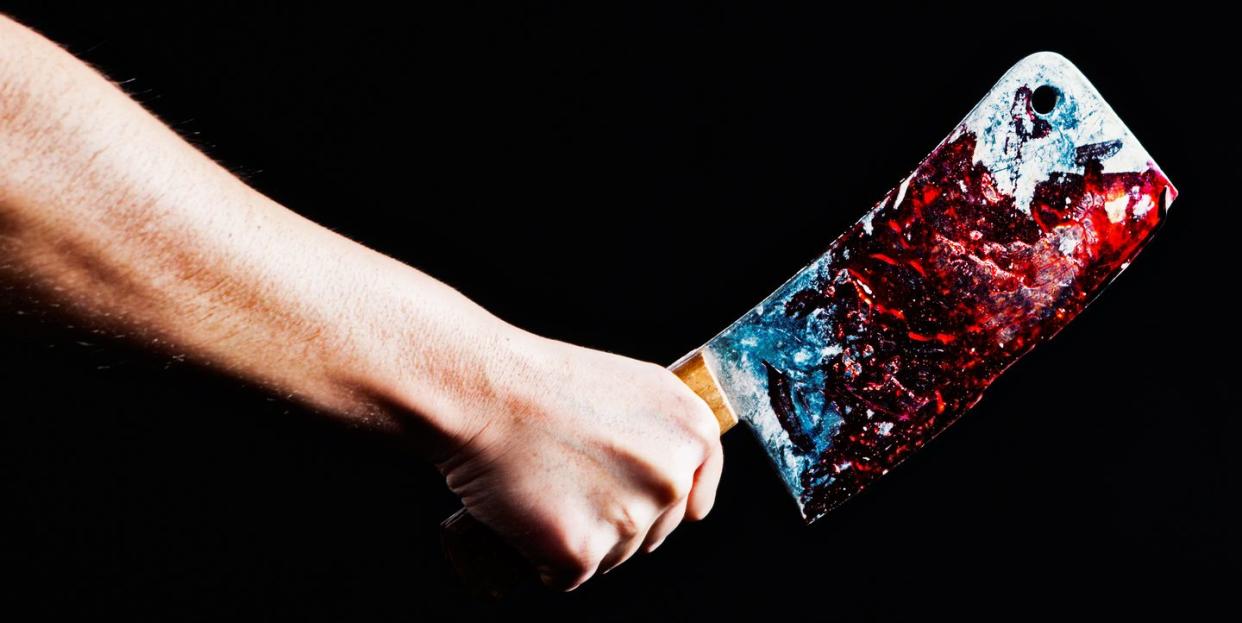Fun New Evidence Shows Our Ancestor Relatives Butchered and Ate Each Other

"Hearst Magazines and Yahoo may earn commission or revenue on some items through these links."
Cuts made from stone tools found on a hominin fossil led researchers to the conclusion that Homo sapiens’ relatives were butchering and eating each other.
Molds and 3D scans helped researchers investigate the fossilized bone.
The find is the oldest example of this type of behavior.
Briana Pobiner, a paleoanthropologist at the Smithsonian’s National Museum of Natural History, thought she’d be squinting at prehistoric predator bite marks while scouring a 1.45-million-year-old hominin shin bone fossil. She soon found, however, that the marks she was seeing weren’t from animals—they were cut marks made from stone tools. You could call them butcher’s marks.
“The information we have tells us that hominins were likely eating other hominins at least 1.45 million years ago,” Pobiner says in a news release. “There are numerous other examples of species from the human evolutionary tree consuming each other for nutrition, but this fossil suggests that our species’ relatives were eating each other to survive further into the past than we recognized.”
In a study published in Scientific Reports, Pobiner and her co-authors show how they analyzed 11 marks on one bone and identified nine of those marks as clear matches for the type of damage made when stone tools are used to butcher parts of the body.
Early in the process, Pobiner was investigating the fossilized tibia with a magnifying glass, hoping to get some clues about extinct beasts that might have been gnawing on the shin bone of a hominin over a million years ago. She found little of the sort, instead locating what looked like cut marks a few millimeters long.
“These are to our knowledge the first—and to date only—cut marks identified on an early Pleistocene postcranial hominin fossil,” the authors claim in the study.
Taking a tip from dentists, Pobiner employed the material used for taking impressions of teeth to make molds of the cuts. She then sent the molds to Michael Pante of Colorado State University, offered no background on what she was looking for so as not to not bias his analysis. He crafted 3D scans and compared the marks to a database of 898 individual tooth, butchery, and trample marks all created during controlled experiments.
That analysis confirmed the suspicions. Nine of the 11 were a “clear match” for stone tools, while the other two were likely from a lion (or at least one of the three different types of saber-tooth cats from that era).
“These cut marks look very similar to what I’ve seen on animal fossils that were being processed for consumption,” Pobiner says. “It seems most likely that the meat from this leg was eaten and that it was eaten for nutrition as opposed to for a ritual.”
She explained that, while the marks alone don’t prove a meal was made of whoever used to own this bone, the cuts are located where the calf muscle attaches to the bone—a likely starting place to cut if you’re trying to remove a chunk of flesh. The marks are all also oriented in the same direction, leading Pobiner to believe that someone using a stone tool made them at around the same time without changing grip or adjusting the cutting angle.
“We interpret the location of the cut marks,” the authors write in the study, “to be more likely the result of defleshing than disarticulation.”
But Porbiner cautions against calling it cannibalism, since that definition requires both eater and eaten to be of the same species. Considering the age of the fossil, researchers aren’t sure which species of hominin it comes from. And as for whoever made the meal, there’s no way to know who was doing the butchering. Stone tools don’t do much to narrow down the timing.
There’s plenty more we don’t know about these marks—even the role of the saber-toothed cat is a mystery. Since the two bite marks don’t overlap the cut marks, it could be that the cat found the remains later, or made an attack before the hominins finished their process. Either way, it’s clear that the majority of the marks weren’t cat-induced. Most of the blame can be placed on the hominins and their stone tools.
You Might Also Like
